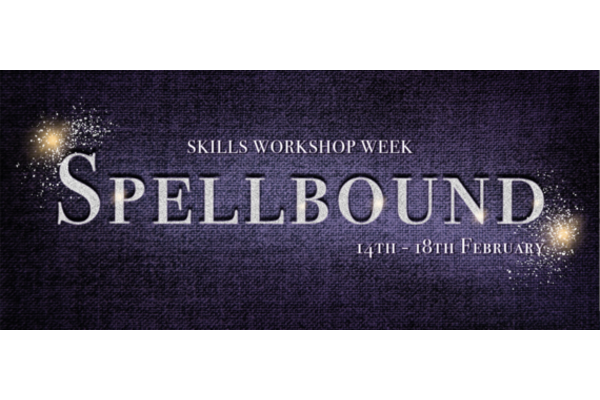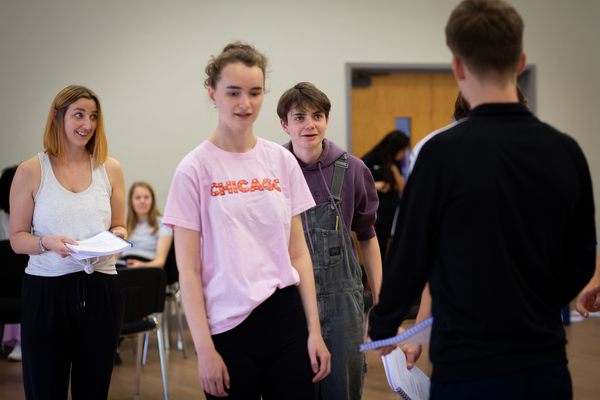The structure of a CTC youth theatre project often feels as if it can be divided into three parts. The intensity of the week in August, whereby in six days we build up the show from scratch and which Daisy has described excellently in the previous blog. Then there is the two month period of September and October with rehearsals twice a week, breaking down the show and building it back with polished scenes and musical numbers. The third act of this process is show week - long and sometimes stressful days of technical rehearsals at the beginning of the week, with the payoff of show days full of excitement. We now have just a few days before we start rehearsing in the theatre and performing to a live audience.
I am lucky enough to have been involved with the three previous youth projects. Whilst I
now have a reasonable understanding of the structure of the rehearsal process, I’ve learnt
that the nature of the projects will inevitably vary due to contrasting musical styles, stories
and working with a new company each year. Our House has been quite different to any
project I have worked on.
The show is a jukebox musical, which means that the score is inspired by songs already
written. In this case, Our House is based on the music of the enduring ska band Madness.
What sets Our House apart in this genre is the fact that Madness songs are very lyrical and
can tackle broad themes such as community, family and crime. Thus, they are a great
medium for storytelling in themselves, allowing Tim Firth to piece together an entertaining
but also gritty narrative that doesn’t pause for the songs to be delivered. On the contrary,
the songs accelerate the storytelling which leads to a high-paced show, heightened by the
fact that the songs are often energetic, lending themselves to dynamic singing and
choreography. And this has proven to fit well with how our directors, Chris and Nicola, and
musical director, Jen, approach musicals. They encourage us to focus on storytelling first
and foremost and then work with us to apply the technical details needed to convey the
choices we make.
And this leads us on to the rehearsals, which begin with what has become a signature
element of a CTC youth show: the notorious warm-ups. They can be intense, but it’s
important for everyone to be fully energised to make the most out of the time we have to
rehearse, as well as building endurance to tackle the show itself. As this show is shorter in
length than some other musicals, it was quicker to build up at the outset, so rehearsals since that initial week have been focussed on developing vocal, character and choreographic detail. As an ensemble member, you are playing numerous characters, as well as being responsible for providing backing vocals to those on stage, so we are all encouraged to write detailed ‘tracks’ of our entrances and exits, props and costumes throughout the show. The story spans a lengthy time period, so the principals have also had to consider long term character development.
Without giving too much away, the narrative follows two versions of Joe Casey’s life, one
where he might have taken the ‘right’ decision and one where he chose the ‘wrong’ one.
This therefore means that there are lots of quick costume changes, especially for Toby, who has too switch between ‘good Joe’ and ‘bad Joe’, sometimes in seconds! Consequently,
working in costume was introduced into the process at an earlier stage than would be usual, which has been helpful for perfecting the ‘mechanics’ of real time costume changes.
Of course the process has not been without difficulties. Unfortunately Covid measures have at times seen cast members being put into isolation. Naturally, this has affected both the progress of rehearsals – a duet can be difficult with only one party present – as well as
morale within the company. Two particular cast members have taken the time to learn the
lines, lyrics and tracks of the leading roles; an admirable act to put in the extra effort,
particularly with the knowledge that, should everything go to plan, they will not get the
opportunity to perform as those roles.
And this, in my opinion, is where CTC shows its strengths. As a company. A collective group
of people, inputting their individual talents to create the best possible performance for an
audience to experience. One of the main aims of the youth company is giving people aged
14-21 - like myself - the chance to work and learn from peers and professionals with the
outcome of a great show, however the talent and energy of the many adults involved
cannot be underestimated. Chris, Jen and Nicola who create the vision for the show, run the rehearsals and then push us to achieve our potential; Ali who is present at every rehearsal, logs all of our Covid test results and sources the props on top of everything else; the band who are essential to telling the story; the stage managers, set and costume designers, lighting and sound teams who spend time behind the scenes, adding extra layers to the show; the chaperones who volunteer their time each night so that the shows can run; everyone involved in publicity, photography, front of house …
I’m incredibly grateful to Louis Ling for time and time again bringing these people together
and giving everyone the opportunity to do what they do best. Whilst this, hopefully, won’t
be my last show with CTC, I’m aware that it will be my last one with the young company. So
as we enter the show week, my aim is to remember the detail of everything that we have
worked on over the last couple of months, but also to just enjoy all the little moments.
Warming up on stage with an empty auditorium. The pre-show backstage thrill as
adrenaline runs high. Hearing the band play the first notes as you stand in the wings,
overcoming nerves by focussing on throwing every bit of energy at the next couple of hours.








